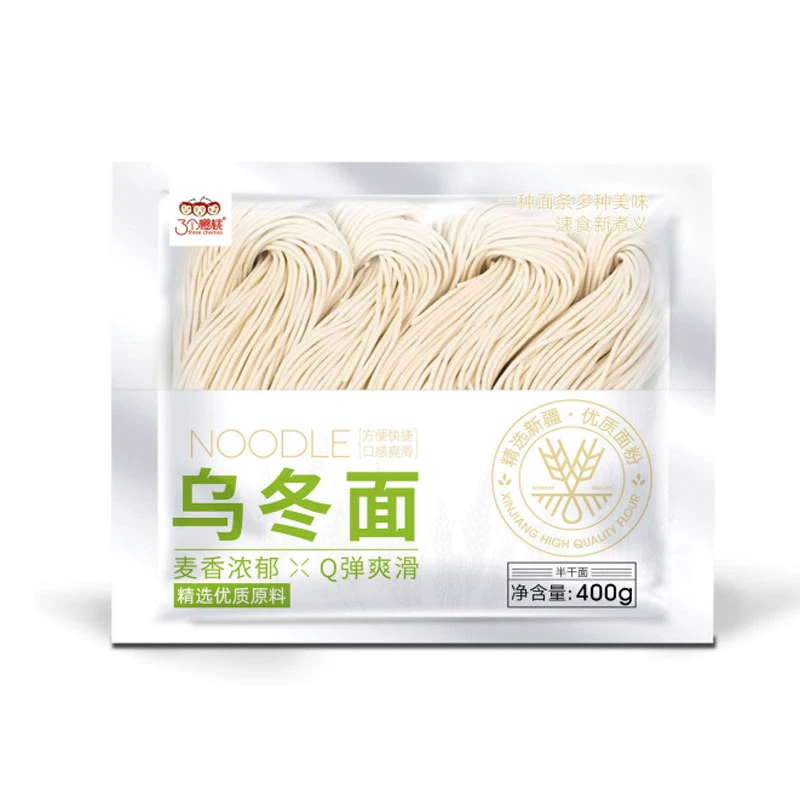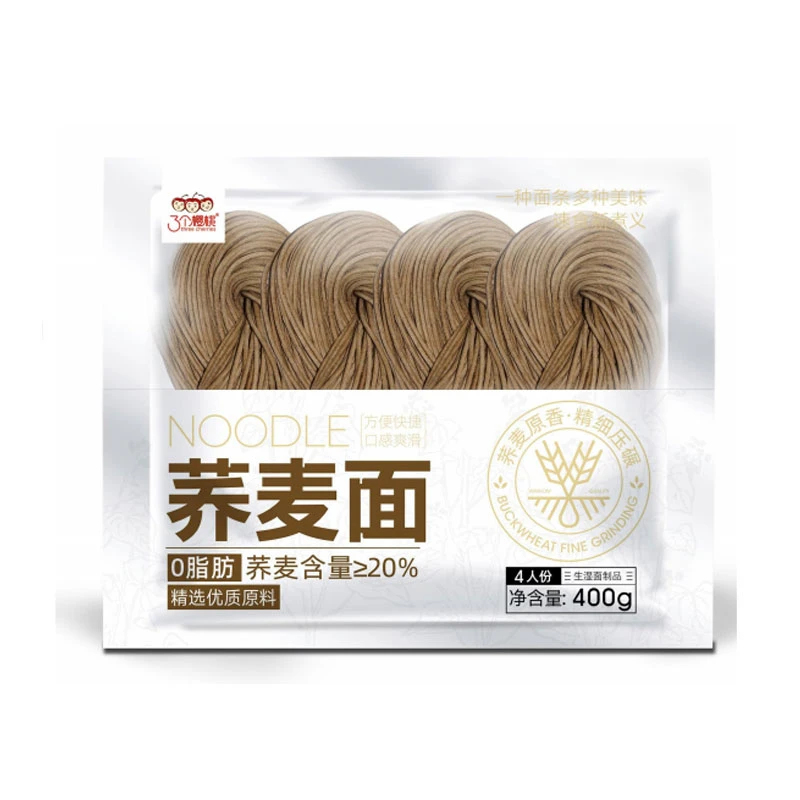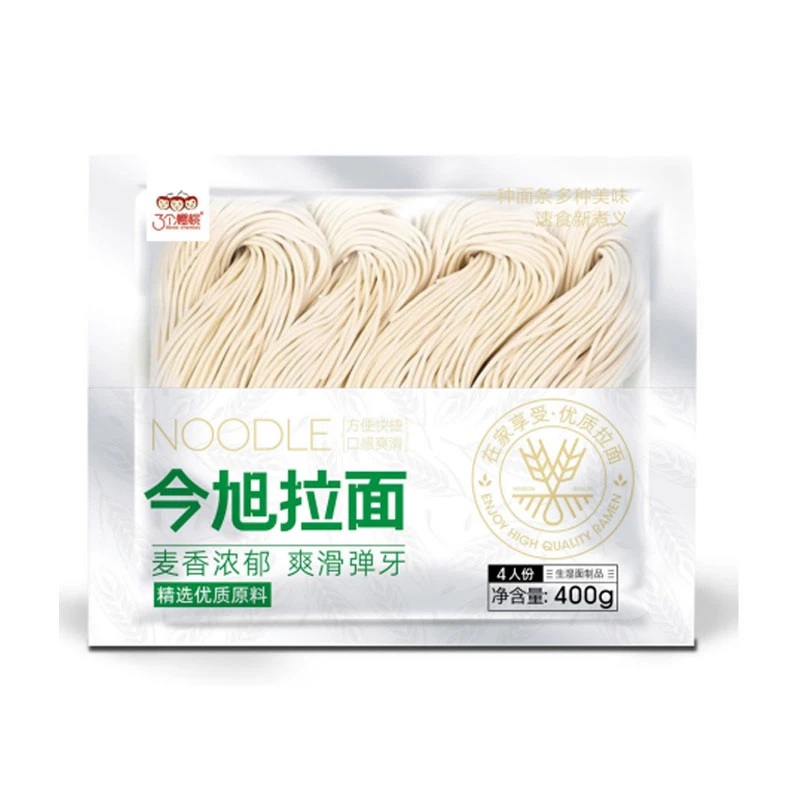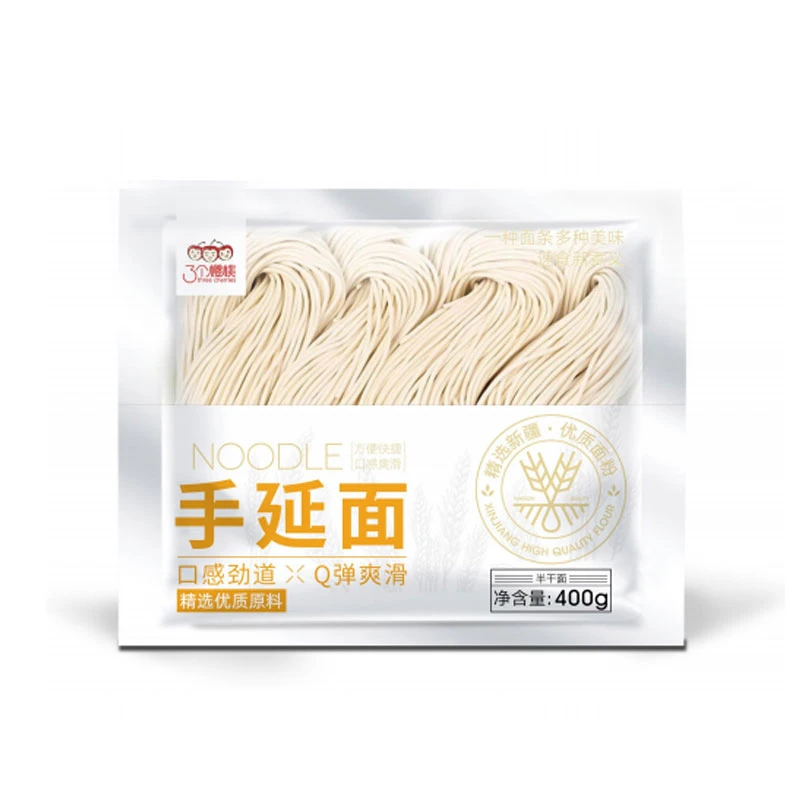Konjac Noodles: Low Carb & Gluten-Free Pasta Alternative
Strategic Integration of Konjac Noodles in Advanced Food Manufacturing
In the rapidly evolving food industry, where health and convenience are paramount, the demand for innovative and functionally superior ingredients has surged. Konjac noodles have emerged as a cornerstone solution for manufacturers targeting the burgeoning low-carb, gluten-free, and low-calorie segments. Derived from the corm of the konjac plant (Amorphophallus konjac), these unique noodles offer a distinct nutritional profile and exceptional versatility, positioning them as a strategic asset for product diversification and market expansion. Their inherent ability to align with contemporary dietary trends provides a significant competitive advantage for businesses that integrate them into their culinary offerings, ranging from ready-to-eat meals to specialized dietary products for health-conscious consumers and professional food service providers.
Our flagship product, Low Gi Braised Beef Konjac Noodles, exemplifies the synergistic fusion of advanced nutritional science with gourmet culinary principles. This product is meticulously engineered to not only deliver caloric efficiency but also a rich, satisfying flavor profile, making it an ideal choice for a wide array of B2B applications. Understanding the precise material properties, sophisticated manufacturing processes, and diverse application potential of these innovative noodles is essential for capitalizing on their full market impact. This article provides a comprehensive technical overview for B2B decision-makers and technical personnel.
Precision Manufacturing Process of Konjac Noodles
The production of high-grade konjac noodles is a testament to precision food engineering and rigorous quality management. The core material is Konjac Glucomannan (KGM) flour, a premium water-soluble dietary fiber known for its remarkable viscosity and gelling capabilities. These attributes are foundational to the unique texture and structural integrity of the finished noodles. The manufacturing methodology is carefully designed to optimize KGM’s intrinsic properties, ensuring a consistent, safe, and sensory-appealing product. Unlike traditional wheat-based pastas that rely on gluten for elasticity, these noodles achieve their distinctive characteristics through the robust hydrophilic interactions of KGM.
The typical production sequence commences with the precise preparation of the KGM slurry. High-purity KGM powder is meticulously dispersed in deionized water, often augmented with a precisely measured calcium hydroxide solution, which acts as a vital coagulant. This blend undergoes intensive mixing to yield a uniformly viscous paste. Subsequently, the paste is extruded through specialized dies, forming the desired noodle configurations. The dimensional accuracy of these dies is critical for ensuring consistent thickness and textural uniformity, directly influencing the product’s mouthfeel and cooking performance in commercial applications. This extrusion process is carefully controlled to prevent premature gelling and maintain the integrity of the KGM structure.
Post-extrusion, the newly formed noodles undergo a crucial coagulation and setting phase. During this stage, calcium ions interact with the KGM molecules, facilitating the formation of a resilient gel matrix, which imparts the noodles' characteristic firm yet elastic texture. This is often followed by a controlled heat treatment, such as blanching or steam sterilization, to further stabilize the gel structure and significantly extend the product's shelf life through effective pasteurization. Adherence to strict temperature and duration parameters throughout this process is imperative to prevent KGM degradation and preserve optimal product quality. Our manufacturing processes are in strict compliance with international food safety standards, including ISO 22000 and HACCP, providing assurance of a safe, consistent, and superior product for demanding B2B applications in sectors such as large-scale catering and prepared meal production.
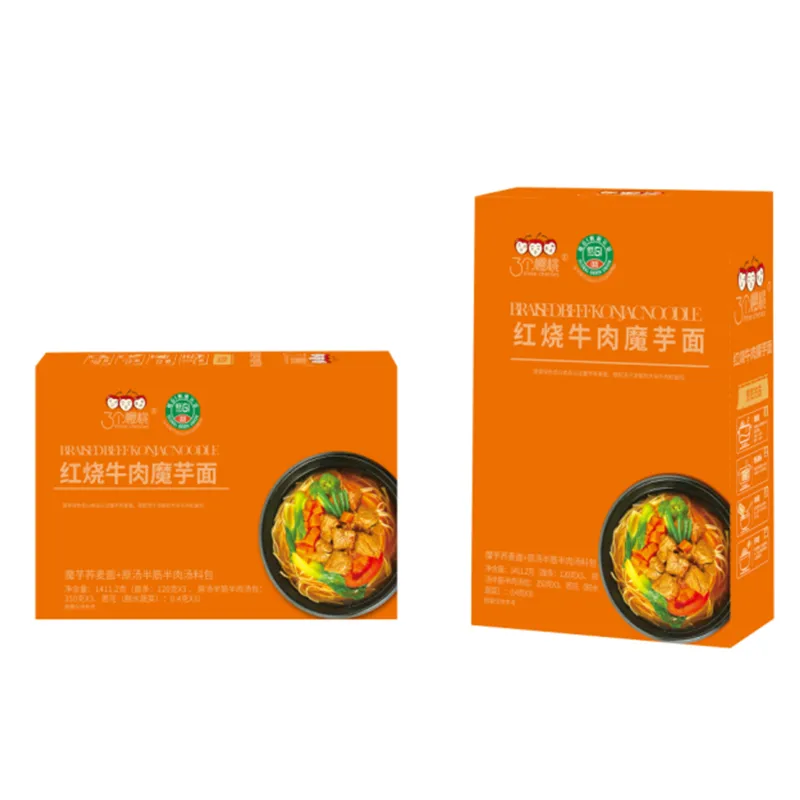 Image: Advanced Konjac Noodle Production Line (Illustrative)
Image: Advanced Konjac Noodle Production Line (Illustrative)
Technical Specifications and Distinct Nutritional Profile
The compelling advantage of konjac noodles extends beyond their sophisticated manufacturing to their superior nutritional characteristics. Comprising primarily water and highly soluble dietary fiber (glucomannan), they offer an exceptionally low caloric and carbohydrate content. This profile positions them as an ideal and healthier substitute for conventional wheat or rice noodles, particularly for dietary regimens focused on weight management, stringent glycemic control, or specific allergen restrictions. The data presented below highlights the significant nutritional disparities between typical konjac noodles and standard wheat-based alternatives. This comparison effectively illustrates why options like low carb soba noodles (referring to konjac as a low-carb alternative) are rapidly gaining market traction.
| Nutritional Parameter (per 100g serving) | Konjac Noodles (Approximate Values) | Standard Wheat Noodles (Approximate Values) |
|---|---|---|
| Energy | 5-10 kcal | 130-150 kcal |
| Total Carbohydrates | 0.5-3 g | 25-30 g |
| Dietary Fiber (Glucomannan) | 3-4 g | 1-2 g |
| Net Carbohydrates | <1 g | 23-28 g |
| Protein | 0 g | 4-5 g |
| Fat | 0 g | 0.5-1 g |
| Gluten Content | Gluten-Free | Contains Gluten |
The inherent absence of gluten in these noodles makes them a superior choice for individuals with celiac disease or gluten sensitivities, directly addressing common consumer inquiries such as, "are soba noodles gluten free?" (Traditional soba often incorporates wheat flour, rendering it unsuitable for gluten-free diets unless explicitly specified as 100% buckwheat). Furthermore, their high fiber content significantly aids digestive health, promotes extended satiety, and contributes to the stabilization of blood glucose levels, a critical factor for managing conditions like diabetes. These attributes render konjac a strategic ingredient for manufacturers developing health-focused meal solutions, facilitating product diversification and entry into specialized dietary markets.
Diverse Application Scenarios and Industry Impact
The remarkable versatility of konjac noodles facilitates their seamless integration across a wide spectrum of food products and services, unlocking significant market opportunities for B2B clients. This adaptability translates into agile product development capabilities, enabling catering to diverse consumer preferences and operational requirements.
- ✓ Ready-to-Eat (RTE) Meals: Their neutral flavor profile and stable texture make them an excellent base for pre-packaged, microwaveable meals. This is particularly advantageous for products targeting demographics focused on weight management, fitness, or diabetic-friendly options, as their low caloric density significantly reduces the overall caloric load without compromising portion size or consumer satiety.
- ✓ Food Service & Institutional Catering: Restaurants, corporate cafeterias, and healthcare institutions can significantly expand their menu offerings by providing healthier alternatives to traditional wheat or rice noodles. This accommodates various dietary preferences, including ketogenic, paleo, and gluten-free diets. Their extended shelf life and minimal preparation requirements offer considerable logistical and operational efficiencies.
- ✓ Specialty Diet Product Lines: Manufacturers specializing in products for diabetes management, celiac patients, or specific low-carb diets will find these noodles an indispensable ingredient. They enable the creation of authentic-tasting noodle dishes that strictly adhere to precise dietary guidelines, effectively addressing a critical market demand.
- ✓ Global Culinary Innovations: From traditional Asian stir-fries to contemporary European pasta dishes, konjac adapts seamlessly, fostering creative fusion cuisine that emphasizes health without sacrificing authentic flavor or culinary appeal. This broadens the potential for product export and deeper market penetration.
The strategic adoption of konjac noodles by food manufacturers and service providers directly contributes to enhanced product portfolios, increased market share within health-focused segments, and improved customer satisfaction through nutritionally superior offerings. This innovation is perfectly aligned with prevailing global health trends and consumer demand for transparent, functional food products.
Product Spotlight: Low Gi Braised Beef Konjac Noodles – A Benchmark in Innovation
Our premier product, the Low Gi Braised Beef Konjac Noodles, stands as a testament to our unwavering commitment to delivering premium quality, nutritionally optimized food solutions. This innovative offering masterfully combines the intrinsic benefits of konjac noodles with the rich, complex flavors of expertly braised beef. The result is a convenient, gourmet meal designed to satisfy discerning palates while strictly adhering to crucial dietary guidelines. The meticulous development process for this product involved extensive research and development to ensure optimal flavor infusion, robust texture integrity, and a precisely balanced macronutrient profile, tailored for both consumer appeal and B2B operational ease.
Key technical and nutritional features of our Low Gi Braised Beef Konjac Noodles include:
- ● Optimized Glycemic Index (GI): Engineered to promote stable blood glucose levels, making it ideal for diabetic-friendly and energy-sustaining diets.
- ● High Protein Content: Featuring premium, slow-braised beef, this product supports muscle maintenance and provides sustained satiety, crucial for effective portion control and nutritional balance.
- ● Rich Flavor Profile: Developed by our team of culinary experts, the dish delivers a deeply satisfying and authentic taste experience, designed for broad appeal across diverse consumer bases.
- ● Exceptional Convenience: Pre-cooked and ready-to-heat, this product streamlines preparation for busy consumers and significantly enhances operational efficiency for large-scale food service providers.
- ● Certified Allergen-Friendly: Being naturally gluten-free, it is suitable for individuals with specific dietary needs, offering a critical advantage over many conventional noodle dishes.
This product unequivocally demonstrates how strategic ingredient selection and meticulous formulation can successfully address the intricate demands of the contemporary food market, delivering both significant health benefits and compelling culinary appeal. Our rigorous commitment to quality ensures that every production batch adheres to the most stringent safety and nutritional standards.
Quality Assurance, Certifications, and Tailored Solutions
Our foundational commitment to unparalleled quality and food safety underpins all our operational processes. For our B2B partners, this translates into a highly dependable supply chain of premium konjac noodles and associated food products that consistently meet and exceed global industry benchmarks. Our state-of-the-art manufacturing facilities operate under the strictest certification protocols, ensuring product integrity from raw material sourcing to final delivery. These certifications include:
- ✓ ISO 22000 Certification: Demonstrates our robust Food Safety Management System, ensuring comprehensive hazard control at every critical stage of production.
- ✓ HACCP Compliance: Implements a systematic, proactive approach to identify, assess, and control biological, chemical, and physical hazards throughout the food production process.
- ✓ FDA Registration: Ensures full compliance with the U.S. Food and Drug Administration's regulations, facilitating safe import and distribution within the American market.
- ✓ GMP (Good Manufacturing Practices): Guarantees that our products are consistently produced and meticulously controlled according to the highest quality standards, minimizing risks inherent in food production.
Beyond our standard product lines, we specialize in developing and providing bespoke konjac noodle solutions tailored to precise client specifications. Whether the requirement is for unique noodle shapes, customized packaging formats, or specific ingredient formulations (e.g., varying KGM concentrations to achieve desired textural profiles, or integrating other functional ingredients), our dedicated R&D team collaborates intimately with partners. This collaborative approach ensures that our products seamlessly integrate into your existing product lines, delivering customized solutions for maximum market impact and operational efficiency. We are adept at managing the complexities of large-volume orders, guaranteeing consistent quality and reliable delivery, typically within 4-6 weeks for custom formulations subsequent to prototype approval.
Our commitment extends to comprehensive post-sales support, encompassing expert technical assistance for product integration and continuous quality assurance monitoring. We also provide a robust quality guarantee, affirming that our products consistently meet all agreed-upon specifications and performance metrics, thereby fostering enduring, trust-based relationships with our valued B2B clientele.
Frequently Asked Questions (FAQ) about Konjac Noodles
- Q1: What are konjac noodles made of?
- Konjac noodles are primarily composed of Konjac Glucomannan (KGM) flour, a unique soluble dietary fiber extracted from the root of the konjac plant (Amorphophallus konjac). They are characterized by their high water content (over 97%) and are essentially pure dietary fiber with negligible caloric and carbohydrate values, making them an ideal base for low-energy-density foods.
- Q2: Are konjac noodles gluten-free? And are soba noodles gluten-free?
- Yes, pure konjac noodles are inherently gluten-free, providing a safe and versatile option for individuals managing celiac disease or gluten sensitivities. In contrast, traditional soba noodles are typically produced from a blend of buckwheat flour and wheat flour, meaning they are generally NOT gluten-free unless explicitly certified as 100% buckwheat soba. It is always crucial to verify product labeling for "are soba noodles gluten free" claims.
- Q3: How do these noodles contribute to weight management and blood sugar control?
- The high glucomannan fiber content in konjac noodles expands significantly in the digestive tract, promoting a strong sense of fullness and satiety, which naturally aids in reducing overall calorie intake. As a non-digestible fiber, glucomannan also decelerates the absorption of carbohydrates, thereby preventing rapid and significant spikes in blood sugar levels. This makes them exceptionally beneficial for glycemic control and positions them as a superior alternative, akin to low carb soba noodles, for individuals adhering to diabetic or ketogenic diets.
- Q4: What is the typical shelf life and recommended storage for bulk konjac noodle products?
- When meticulously packaged in a sterile liquid medium and hermetically sealed, konjac noodles boast an impressive shelf life of 12-18 months at ambient temperatures. This extended shelf stability significantly reduces reliance on refrigerated storage, offering substantial logistical and cost advantages for large-volume B2B procurement and warehousing. Once the packaging is opened, it is recommended to refrigerate the noodles and consume them within a few days to maintain optimal freshness and safety.
Conclusion: Pioneering the Future of Functional Noodles
Konjac noodles represent a significant technological and nutritional advancement in the functional food sector, offering an unparalleled combination of health benefits, manufacturing adaptability, and extensive market appeal. For B2B stakeholders, the strategic integration of these innovative noodles, exemplified by products like our Low Gi Braised Beef Konjac Noodles, provides a clear pathway to address the evolving consumer demand for healthier, more sustainable, and precisely diet-friendly food solutions. By leveraging their inherent low-calorie, low-carb, and gluten-free attributes, coupled with our rigorous quality assurance protocols and comprehensive customizable solutions, businesses can unlock substantial new growth opportunities and firmly establish their leadership in the dynamic health food market. The technical superiority and broad applicability of konjac-based products make them an indispensable component for shaping the future of global food manufacturing.
References
- Chua, M., & Baldwin, T. C. (2018). Amorphophallus konjac K. Koch: A review of its cultivation, processing, and applications. Journal of Food Science and Technology, 55(4), 1187-1196.
- Vuksan, V., & Xu, X. (2020). Konjac glucomannan: Safety and efficacy of a natural dietary fiber. Nutrition Reviews, 78(3), 227-238.
- Sodhi, R., & Singh, N. (2021). Konjac flour and its uses in food applications. Journal of Texture Studies, 52(2), 173-185.
- Zhang, H., & Chen, G. (2019). Application of konjac glucomannan in functional foods. Food Science and Human Wellness, 8(1), 1-8.
-
The Wholesome Delight of Organic NoodlesNewsAug.15,2025
-
The Vibrant Delight of Spinach NoodlesNewsAug.15,2025
-
Savor the Spicy Delight of Hot Pot NoodlesNewsAug.15,2025
-
Savor the Chill with Irresistible Cold NoodlesNewsAug.15,2025
-
Indulge in the Authentic Delight of Udon NoodlesNewsAug.15,2025
-
Dive into the Delicious World of Cart NoodlesNewsAug.15,2025
-
Unlock the Delicious Potential of Yam NoodlesNewsAug.11,2025
Browse qua the following product new the we



